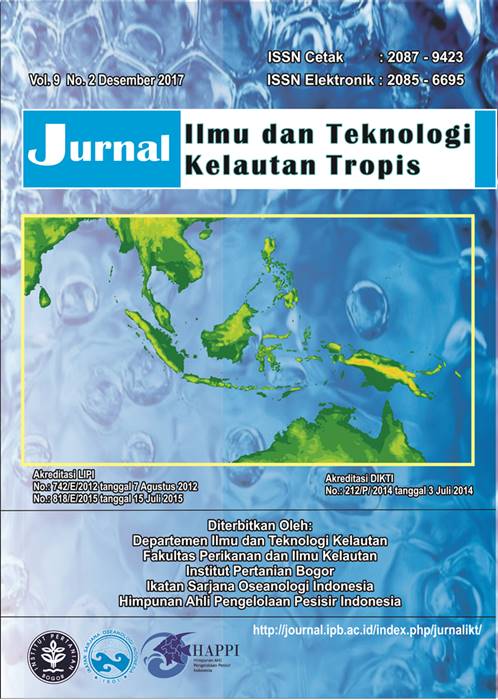TRAJECTORY MODEL FOR IDENTIFICATION OF OIL SPILL AROUND THE COAST OF PARI ISLAND, SERIBU ISLANDS, NORTH JAKARTA
Abstract
Oil spills at sea are common in the shipping lanes of the ship as well as the locations of offshore oil drilling. Unfortunately, in every occurrence of the oil spill, we only see the effects after the occurrence, without knowing the original source. Indonesian Numerical Coastal Environmental Assessment (IndoNACE) is research collaboration between Indonesian and Germany by applying satellite data, numerical modeling, and field observations to make an assessment on environmental consequences to oil spills at sea. One of the locations of these research activities is Pari Island, Seribu Islands, North Jakarta. Simulation of hydrodynamic models around Pulau Pari with Hamburg Shelf Ocean Model (HAMSOM) was performed using tides, surface winds, and density difference of seawater as input. Afterwards, by utilizing results of the hydrodynamic model, the spreading of oil spills as well as the origin of the oil spills were estimated using forward and backward trajectory models, respectively. In the case study of Pari Island, there is a presence of thin film of oil in 5 November 2015 that disappears after one day. We suggest that the origin of oil spills were found on the beach Pari Island is expected from the east - northeast of Thousand Islands and is likely from the subsea pipeline which runs from the north to the city of Jakarta or shipping lanes through the Indonesian archipelagic sea lanes (ALKI) I of Karimata Strait up to Java Sea and the Jakarta Bay.
Authors
This work is licensed under a Creative Commons Attribution 4.0 International License.
Jurnal Ilmu dan Teknologi Kelautan Tropis i is an open-access journal, meaning that all content is freely available without charge to the user or their institution. Users are allowed to read, download, copy, distribute, print, search, or link to the full texts of the articles in this journal without needing to request prior permission from the publisher or the author.
All articles published by Jurnal Ilmu dan Teknologi Kelautan Tropis are licensed under the Creative Commons Attribution 4.0 International License. This allows for unrestricted use, distribution, and reproduction in any medium, provided proper credit is given to the original authors.
Authors submitting manuscripts should understand and agree that the copyright of published manuscripts is retained by the authors. Copyright encompasses the exclusive rights of authors to reproduce, distribute, and sell any part of the journal articles in all forms and media. Reproduction of any part of this journal, its storage in databases, and its transmission by any form or media is allowed without written permission from Jurnal Ilmu dan Teknologi Kelautan Tropis.


